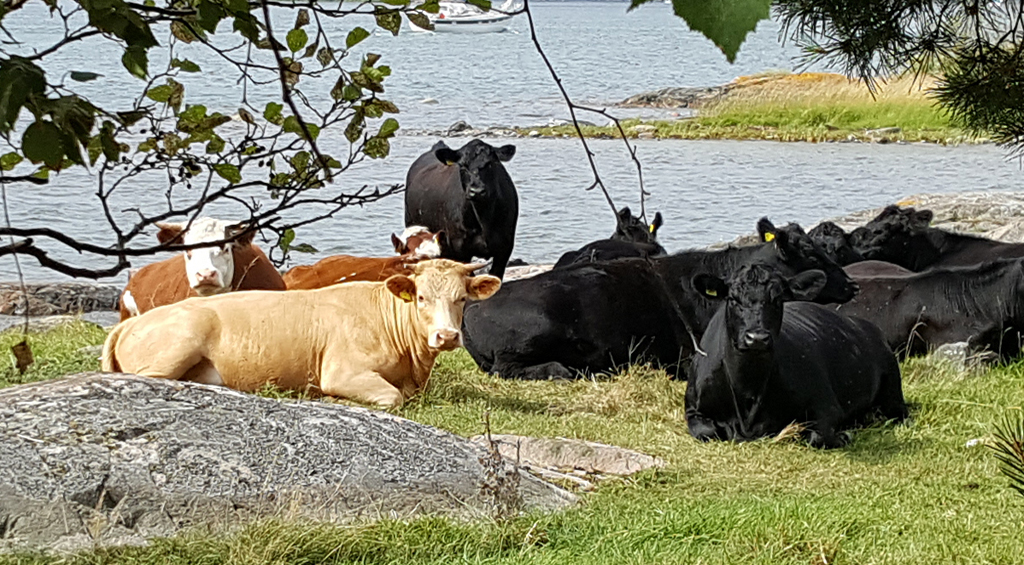
The old farmland on the island is kept the way it used to be. Hay meadows and grazings are still small sized and surrounded by open ditches. Cows and sheep are grazing all over the island, even in the forest. The landscape, for example pollarded trees, reveals the old farming tradition of the Island.
Low land Island
Sävö became a nature reserve in 1987. The island is fairly low and its highest point is only 18 meter over the sea level. Rocks, steep cliffs and crevices are common on the west side of the island. Spruce and pine dominate the forest.
Varying types of vegetation
The nature of the beaches varies and you will often find low-lying meadows close to the water. Despite the island being very small it is rich in species of flowers and different types of vegetation. The reason is probably seeds coming from other nearby islands.
Grazing animals
The vegetation on the island is characterized by the grazing animals. You are likely to find flowers like the orchid Dactylorhiza latifolia, Linum catharticum and Briza media.
There are also different trees like oaks and ashtrees that show traces of pollarding. Some old oaks – about 300 years – are to be find close to the vessel pilot place. Most of the oaks were planted when Sävö was a tenement under the manor of Tureholm. During that period of time the oak was a sign of wealth and success.
Defense and vessel pilots
In the old days Sävö was a part of the country’s defense. Remains of old defenses – redoubts –can be found on both sides of Sävösundet. But the island is perhaps better known as the vessel pilot’s residence.
On the island’s south-eastern tip is a small museum that reflects the history of the vessel pilots. There were vessel pilots on the island from the 17th century until 1967, when the piloting ceased. During World War II, there were, for example, seven pilots on the island. Today the old pilot housing has been transformed into a hostel.